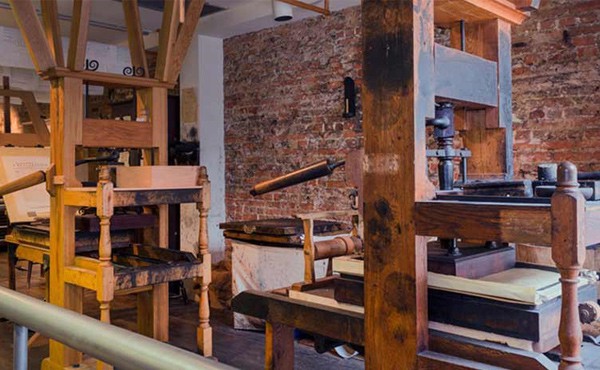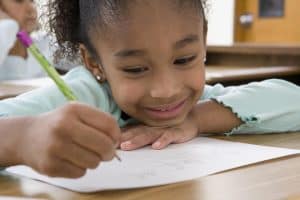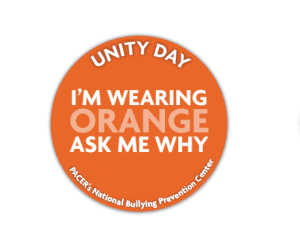March is National Read Aloud Month and National Reading Month in the US. What better time is there to celebrate the importance of reading? We take it for granted, but language wasn’t always written, and widespread literacy wasn’t always the case.
Human history is full of heroes who’ve helped improve society. Here are five who did so by contributing to worldwide literacy. Read on for the history of how the written language was enhanced and transformed by these people.
The Unknown People Who Invented Writing
It had to start somewhere. Someone had to be the first to write down words. Historians aren’t quite sure when writing was invented or who invented it, but they have some pretty good ideas.
The written language most likely first appeared around 5,500 years ago in Mesopotamia (located in present-day Iraq). Early pictorial signs evolved into characters representing sounds in the Sumerian language. They were made by pressing a reed or stick into a tablet of wet clay.[3]
But writing also evolved independently on other continents. It appeared in Egypt by 3200 BCE, in China by 1300 BCE, and in the Americas between 900–600 BCE. The invention of writing was directly responsible for the formation of governments and civilizations. It also literally made history possible, as people can now read about the lives and stories of people long ago.
For class activities around the invention of writing, check out this activity to explore a Mesopotamian scribe’s world. Plus, use this lesson plan to explore the impact writing had on civilization for middle graders.
Johannes Gutenberg: Inventor of the Printing Press
Although some people were able to write and read, not everybody had access to printed materials for much of written language’s history. Before the printing press, copying letters or books meant doing so by hand—a process that was inconvenient, expensive, and prone to errors.
But all that changed when Johannes Gutenberg invented the printing press in the 1450s. The device used movable type, where moveable pieces could quickly be rearranged to print on paper. Now, books could be mass-produced relatively quickly and cheaply. It’s not clear what the first printed piece was, but the most famous book produced by Gutenberg was the Bible (known as the Gutenberg Bible). For the first time, the book was available to everyday people instead of just the wealthy or well-educated.
This led to a revolution where suddenly knowledge no longer belonged to a select few. Instead, books became available to the common person, sparking a revolution in knowledge that directly led to the Renaissance and a scientific revolution.
As a class, watch how a Gutenberg press works in this educational video.
Sequoyah: The Cherokee Scholar Who Invented an Alphabet
Generally, the individuals behind the invention of alphabets aren’t known to history. But that’s not the case with the brilliant Cherokee scholar Sequoyah.
Sequoyah was born around the 1760s in what is now Tennessee. In the early 1800s, the Cherokee people lived in the southeastern parts of the United States. They often interacted with white settlers and took notice of their written language. Sequoyah realized that recording their language on paper could help the Cherokee preserve their way of life.
Sequoyah himself didn’t see what should be so difficult about creating a written language, so he set about to do just that.[1] At first, Sequoyah tried to create a logographic system—creating a character for every word—but abandoned that as impractical.[2]
He turned instead to constructing an alphabet from Latin, Greek, and Cyrillic characters and Arabic numerals. After years of obsessive work, he debuted his syllabary, consisting of a symbol for each sound spoken in Cherokee.
To convince people the written language was real, and not some trick, he gave a demonstration with his daughter. In front of a gathering, he had his daughter leave, and asked someone else to tell him a word to write. Then when his daughter returned, she would read the word. This helped convince the community there was no trickery. Before long, more people learned the syllabary and demonstrated their abilities. From there, written literacy spread among the Cherokee people.[2]
If you’d like to teach your students more about Sequoyah, Georgia Public Broadcasting Education has a video about Sequoyah and Cherokee history.
Today, the Cherokee alphabet is an important cornerstone of the Cherokee identity. Native speakers were among the first to be eligible for COVID vaccines—that’s how important preserving the tradition continues to be. The Cherokee Nation maintains a font set and keyboard for typing the syllabary on a computer, as well as an online resource for learning the Cherokee language.
Watch this video from the Cherokee Nation about how the nation has adapted modern technology to their language and syllabary.
Ben Franklin, Andrew Carnegie, and Others Responsible for Public Libraries in America
Founding father Ben Franklin is often considered responsible for the public library in America—sort of. Franklin’s library was a subscription-service, so it wasn’t quite like today’s free public libraries.[4] There are two other widely-accepted “first public libraries” in America, according to the American Library Association.
In 1833, the town of Peterborough, NH, opened a municipally funded public library that served all members of the community. In 1848, Boston, MA, followed suit, becoming the first big city to have a public library serving its residents.
The idea of public libraries really took off when philanthropist Andrew Carnegie began a campaign to establish true public libraries.[5] Carnegie spent $60 million in the 1880s (about $1.53 billion in today’s dollars) to fund nearly 1,700 public libraries across America.
Today, libraries are jewels of the community. They offer safe places for people to read, study, socialize, and more, with equal access for everyone. It’s hard to think about a time without them, so the people who made public libraries possible deserve gratitude.
This child-friendly site does a good job of visually explaining the Dewey Decimal System.
Dolly Parton, the Country Musician Who Gives Any Child a Book for Free
Dolly Parton is probably best known as the stylish country music icon and actress with hits like “Jolene” and “Islands in the Stream.” But she’s also a philanthropist who has made it her life’s mission to help early childhood literacy in America.
Her plan is simple: Parton’s Imagination Library mails free children’s books to children from their birth until they begin school. That’s it.
The program began in Tennessee and is expanding across the country and internationally. By January 2021, more than 152 million books were delivered to children through this amazing program.
Families can check if the program is in their area and sign up here.
Sources:
- Smithers, Gregory D. “The Cherokee Diaspora: An Indigenous History of Migration, Resettlement, and Identity.” Yale University Press. 2015.
- “Summitt, April R. “Sequoyah and the Invention of the Cherokee Alphabet.” Greenwood. 2012. https://www.abebooks.com/9780313391774/Sequoyah-Invention-Cherokee-Alphabet-Landmarks-0313391777/plp
- Clayton, Ewan. “Where Did Writing Begin?” British Library. https://www.bl.uk/history-of-writing/articles/where-did-writing-begin
- American Library Association. “Before 1876.” http://www.ala.org/aboutala/before-1876
- Stamberg, Susan. “How Andrew Carnegie Turned His Fortune Into A Library Legacy.” NPR Morning Edition. https://www.npr.org/2013/08/01/207272849/how-andrew-carnegie-turned-his-fortune-into-a-library-legacy





